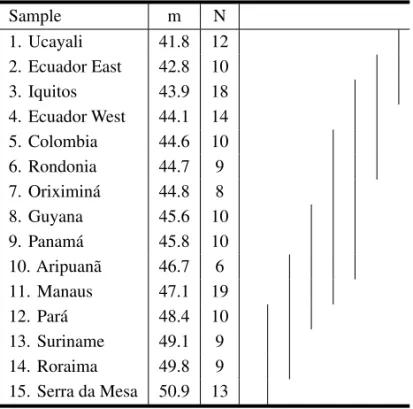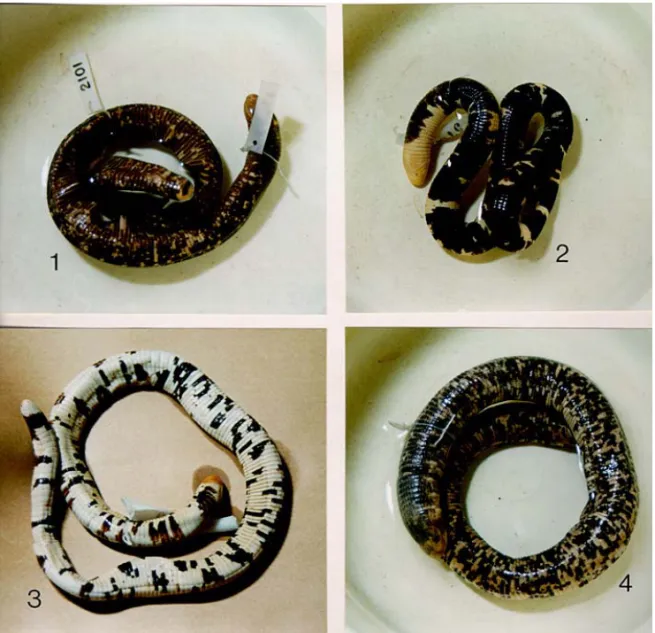A second note on the geographical differentiation of Amphisbaena fuliginosa L., 1758 (Squamata, Amphisbaenidae), with a consideration of the forest refuge model of speciation
Texto
Imagem




Documentos relacionados
The probability of attending school four our group of interest in this region increased by 6.5 percentage points after the expansion of the Bolsa Família program in 2007 and
social assistance. The protection of jobs within some enterprises, cooperatives, forms of economical associations, constitute an efficient social policy, totally different from
The quantitative characters studied were: relative tail length (regression on body, i.e., snout-to-vent length), number of tubercle rows transversely count- ed at midbody, number
Difference between the body temperatures of Amphisbaena munoai and the thermal environment ( ∆ T values) for individuals found in São Jerônimo between March 2011 and October 2012
AN AID TO THE IDENTIFICATION OF THE SOUTH AMERICAN SPECIES OF AMPHISBAENA (SQUAMATA, AMPHISBAENIDAE)..
Color of head distinct from that of body, being darker than adjacent dorsum; the background color of head is dark brown with black extending from around the muzzle to the sides of
The following meristic data taken for each specimen: body annuli (BA), intercalated annuli (IA), annuli interrupted by the cloacal region (AIC), tail annuli (TA), autotomic
The karyotype of Amphisbaena ridleyi, an endemic species of the archipelago of Fernando de Noronha, in State of Pernambuco, Brazil, is described after conventional staining,





